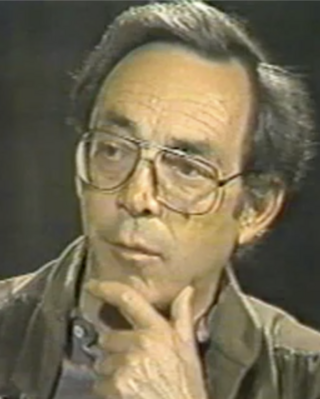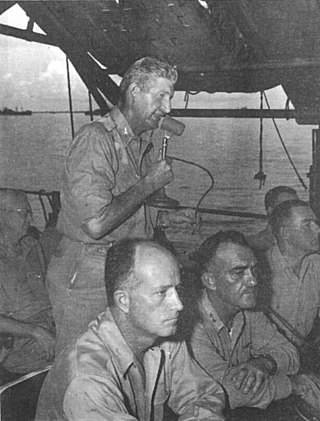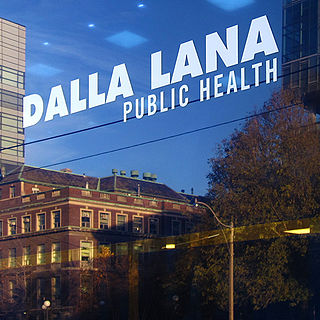Related Research Articles

The University of California, San Francisco (UCSF) is a public land-grant research university in San Francisco, California. It is part of the University of California system and is dedicated entirely to health science and life science. It conducts research and teaching in medical and biological sciences.

Rupert Lee Blue was an American physician and soldier. He was the fourth Surgeon General of the United States from 1912 to 1920. He served as president of the American Medical Association in 1916–17.

William Crawford Gorgas KCMG was a United States Army physician and 22nd Surgeon General of the U.S. Army (1914–1918). He is best known for his work in Florida, Havana and at the Panama Canal in abating the transmission of yellow fever and malaria by controlling the mosquitoes that carry these diseases, for which he used the discoverments made by the cuban doctor Carlos J. Finlay. At first, Finlay's strategy was greeted with considerable skepticism and opposition to such hygiene measures. However, the measures Gorgas put into practice as the head of the Panama Canal Zone Sanitation Commission saved thousands of lives and contributed to the success of the Canal's construction.

Harvey Vernon Fineberg is an American physician. A noted researcher in the fields of health policy and medical decision making, his past research has focused on the process of policy development and implementation, assessment of medical technology, evaluation and use of vaccines, and dissemination of medical innovations. Fineberg has held several prominent positions over the course of his career, including Dean of the Harvard School of Public Health, Provost of Harvard University, and President of the Institute of Medicine, now the National Academy of Medicine.

Eric Goosby is an American public health official, currently serving as the UN Special Envoy on Tuberculosis. Goosby previously served as the United States Global AIDS Coordinator from 2009 until mid-November 2013. In the role, Goosby directed the U.S. strategy for addressing HIV around the world and led President Obama's implementation of the President's Emergency Plan for AIDS Relief (PEPFAR). Goosby was sworn in during June 2009 and resigned in November 2013, taking a position as a professor at UCSF, where he directs the Center for Global Health Delivery and Diplomacy, a collaboration between UCSF and the University of California, Berkeley.

Karl Friedrich Meyer was an American scientist of Swiss origin. He was one of the most prodigious scientists in many areas of infectious diseases in man and animals, the ecology of pathogens, epidemiology and public health.[1-6] Some called him the “Pasteur of the 20th century”.

Herman J. Geiger, known as H. Jack Geiger, was an American physician and civil rights activist. He was a leader in the field of social medicine, the philosophy that doctors had a responsibility to treat the social as well as medical conditions that adversely affected patients' health, famously writing prescriptions for food for impoverished patients with malnutrition. Geiger came to embody the idea of the responsibility of a physician to do something about what is now known as the social determinants of health, believing that medicine could be an instrument of social change. He served patients' medical needs as well as social and economic necessities, which he believed were in large part responsible for the health problems communities faced. He was one of the doctors to bring the community health center model to the United States, starting a network that serves 28 million low-income patients as of 2020.
Karl Murdock Bowman was a pioneer in the study of psychiatry. From 1944 to 1946 he was the president of the American Psychiatric Association. His work in alcoholism, schizophrenia, and homosexuality is particularly often cited.
Samuel Lee Kountz Jr. was an African-American kidney transplantation surgeon from Lexa, Arkansas. He was most distinguished for his pioneering work in the field of kidney transplantations, and in research, discoveries, and inventions in Renal Science. In 1961, while working at the Stanford University Medical Center, he performed the first successful Kidney transplant between humans who were not identical twins. Six years later, he and a team of researchers at the University of California, San Francisco, developed the prototype for the Belzer kidney perfusion machine, a device that can preserve kidneys for up to 50 hours from the time they are taken from a donor's body. It is now standard equipment in hospitals and research laboratories around the world.

Guenter B. Risse is an American medical historian. He has written numerous books, including his most recent "Driven by Fear: Epidemics and Isolation in San Francisco's House of Pestilence." The American Association for the History of Medicine awarded him the 1988 William H. Welch Medal for his book Hospital Life in Enlightenment Scotland and its Lifetime Achievement Award in 2005. He is Professor Emeritus, Department of Anthropology, History and Social Medicine, at the University of California, San Francisco, and currently Affiliate Professor of Bioethics and Humanities at the University of Washington in Seattle.

Stafford Leak Warren was an American physician and radiologist who was a pioneer in the field of nuclear medicine and best known for his invention of the mammogram. Warren developed the technique of producing stereoscopic images of the breast with X-rays while working in the Department of Radiology at the University of Rochester School of Medicine.

Joseph James Kinyoun was an American physician and the founder of the United States' Hygienic Laboratory, the predecessor of the National Institutes of Health.
Julius H. Comroe, Jr. was a surgeon, medical researcher, author and educator, described by The New York Times as an "award-winning expert on the functions and physiology of the human heart and lungs". His work contributed to advances in respiratory physiology, cardiology, heart and vascular surgery, and the treatment of pulmonary disease, hypertension and high blood pressure.
Jeremiah Stamler was an American scientist specializing in preventive cardiology and the study of the influence of various risk factors on coronary heart disease and other cardiovascular diseases, and the role of salt and other nutrients in the etiology of hypertension and coronary heart disease. Stamler is credited with introducing the term "risk factors" into the field of cardiology. In 1988, he was awarded the Donald Reid Medal given by the London School of Hygiene and Tropical Medicine for his contributions to epidemiology. He was professor emeritus of preventive medicine at Northwestern University in Chicago, Illinois. After his retirement from active teaching, he continued his research with his wife Rose until her death in 1998; in his later years he divided his time between Manhattan, Long Island, Chicago, and Pioppi in Southern Italy.

Dalla Lana School of Public Health is the school of public health at the University of Toronto. It was founded in 1927, and was home for 50 years to Connaught Laboratories, a manufacturer of vaccines, insulin, and many other pharmaceutical products. Having grown to be the largest cluster of public health scholars in Canada, the school was revitalized in 2008 with the support of a major gift from the Dalla Lana family.
The UCSF School of Medicine is the medical school of the University of California, San Francisco and is located at the base of Mount Sutro on the Parnassus Heights campus in San Francisco, California. Founded in 1864 by Hugh Toland, it is the oldest medical school in California and in the western United States. U.S. News & World Report ranked the school third in research training and second in primary care training; it is the only medical school in the nation to rank among the top three in both categories. Six members of the UCSF faculty have received the Nobel Prize in Physiology or Medicine and five have received the National Medal of Science.

Pacific Dispensary for Women and Children, initially known as Children's Hospital and then The Hospital for Children and Training School for Nurses, was a women's and children's hospital founded in 1875 in San Francisco, California. In 1877, it was renamed Children's Hospital. Children's Hospital merged with Presbyterian Hospital in 1991, and within two years, a large joint physician group was established. It was subsequently acquired by California Pacific Medical Center.

Alida Avery (1833–1908) was an American physician and Vassar College faculty member. In Colorado, she was thought to be the first woman licensed to practice medicine in the state. She was also the Superintendent of Hygiene for Colorado. Avery was among the first women first admitted to the Denver Medical Society.
LaMar Hasbrouck is an African-American physician, CDC-trained medical epidemiologist, and public health leader. Hasbrouck is the former executive director for the National Association of County and City Health Officials, and former director of the Illinois Department of Public Health and State Health Officer for Illinois. He is a health policy contributing writer for The Hill, recurrent guest on CNN, former host of AMA Doc Talk, a podcast by the American Medical Association and managing Director for DLM LLC, a health consulting firm.

Harriet Louise Hargrave Hartley, also written as Harriett L. Hartley, was an American physician, public health official, and college professor. The Harriet L. Hartley Conservation Area in Maine occupies land she once owned, and is named for her.
References
- 1 2 "Dr Jacob Casson "Jake" Geiger (1885-1981) - Find A..." www.findagrave.com. Retrieved 2021-12-19.
- 1 2 3 "JACOB C. GEIGER, M. D." freepages.rootsweb.com. Retrieved 2021-12-19.
- ↑ "The Oct. 22, 1918, Arkansas Gazette reported the death of the wife of Dr. J.C. Geiger".
- 1 2 "San Francisco Chronicle of 10 November 1981".
- 1 2 "Article in the American Journal of Public Health (date unknown), pp. 1247f".
- ↑ "Geiger, J. C, Purdy, W. C, and Tarbett, B. E.1919 Effective malaria control in a ricefield district, with observations on experimental mosquito flights". The Journal of the American Medical Association.
- ↑ "OLD NEWS: Remembering (the extraordinary) Dr. Geiger". Arkansas Online. 2018-09-24. Retrieved 2021-12-19.
- ↑ "Death grippe: The other great war in 1918 — against influenza — killed millions globally and thousands locally". Arkansas Online. 2018-09-24. Retrieved 2021-12-19.
- ↑ ""DOC" GEIGER TO WAGE WAR ON "SPTTERS"". The Jan. 30, 1919, Arkansas Democrat.
- ↑ "California Botulism Commission". American Journal of Public Health. 13 (1): 51–52. January 1923. doi:10.2105/AJPH.13.1.51. ISSN 0271-4353. PMC 1354356 . PMID 18010867.
- ↑ UCSF Alumni News, Volume 5. University of California, San Francisco. Alumni Association. p. 8.
- ↑ "90th Birthday Honors for Dr. J. C. Geiger". Oakland Tribune. 16 November 1975.
- ↑ CRUSADER UNDAUNTED: Dr. J. C. Geiger, Private Physician to the Public. Max Marshall.
- ↑ Shepard, W. P. (October 1931). "Subject of Following Letter: Appointment of Dr. J. C. Geiger as Health Officer of San Francisco". California and Western Medicine. 35 (4): 328–329. ISSN 0093-4038. PMC 1657927 . PMID 18741931.
- ↑ Directory of Local Health Units. By United States. Public Health Service. Division of General Health Services. 1950–1957. pp. 3, 4.
- ↑ Frisbie, Walter S. (April 1936). "Federal Control of Spray Residues on Fruits and Vegetables". American Journal of Public Health and the Nation's Health. 26 (4): 369–373. doi:10.2105/AJPH.26.4.369. ISSN 0002-9572. PMC 1562722 . PMID 18014403.
- ↑ "Alexandria Daily Town Talk of 07 November 1981".
Max S. Marshall entitled Crusader Undaunted: Dr. J. C. Geiger, Private Physician to the Public (New York: The Macmillan Co., 1958).